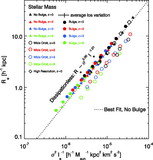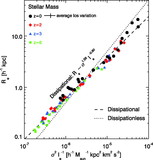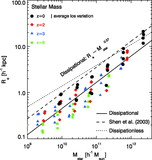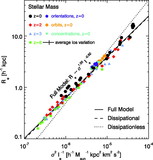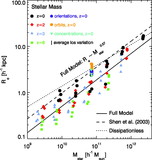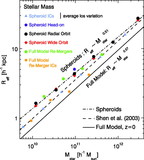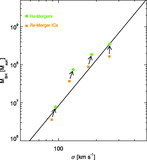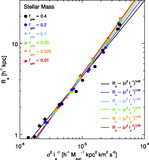Image Details
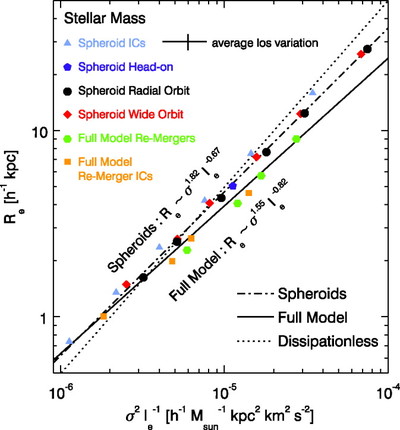
Caption: Fig. 7.
FP relation produced by the merging of spheroidal galaxy models. Using Hernquist (1990) stellar spheroids models with dark matter halos as initial conditions (blue triangles), the remnants produced by dissipationless spheroid mergers appropriate for redshift ﹩z=0﹩, with nearly radial, parabolic orbits (black circles) and wide, elliptical orbits with circularity ﹩\epsilon =0.5﹩ (red diamonds) are calculated. The remnants of spheroidal mergers produce an FP relation similar to their progenitor systems, roughly independent of the orbital energy or angular momentum. Also shown are select spheroidal remnants from gas‐rich disk galaxy merger simulations that include star formation, supernova feedback, and a prescription for feedback from accreting supermassive black holes (orange squares). The disk galaxy merger remnants occupy an FP relation similar to that observed in infrared observations (solid line). The remerging of these disk galaxy remnants on nearly radial, parabolic orbits (green circles), further demonstrates that the merging of spheroidal remnants produces an FP similar to that occupied by the progenitor systems (e.g., Capelato et al. 1995; Dantas et al. 2003; Nipoti et al. 2003; Boylan‐Kolchin et al. 2005). For comparison, the best least‐squares fit to the FP delineated by the dissipationless disk merger remnants (dotted line) and spheroidal merger remnants (dash‐dotted line) is plotted. Also shown is the mean deviation induced by line‐of‐sight variations in projected quantities for a given remnant (detached error bars).
Copyright and Terms & Conditions
© 2006. The American Astronomical Society. All rights reserved. Printed in U.S.A.


